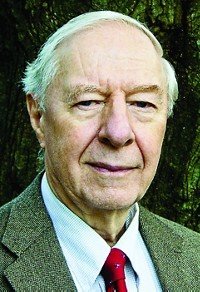Advertisement
Grab your lab coat. Let's get started
Welcome!
Welcome!
Create an account below to get 6 C&EN articles per month, receive newsletters and more - all free.
It seems this is your first time logging in online. Please enter the following information to continue.
As an ACS member you automatically get access to this site. All we need is few more details to create your reading experience.
Not you? Sign in with a different account.
Not you? Sign in with a different account.
ERROR 1
ERROR 1
ERROR 2
ERROR 2
ERROR 2
ERROR 2
ERROR 2
Password and Confirm password must match.
If you have an ACS member number, please enter it here so we can link this account to your membership. (optional)
ERROR 2
ACS values your privacy. By submitting your information, you are gaining access to C&EN and subscribing to our weekly newsletter. We use the information you provide to make your reading experience better, and we will never sell your data to third party members.
Materials
Peter Debye Award In Physical Chemistry
by Jyllian Kemsley
January 2, 2012
| A version of this story appeared in
Volume 90, Issue 1
Sponsored by E. I. du Pont de Nemours & Co.
As an undergraduate at Massachusetts Institute of Technology, David Chandler thought he’d be an experimental chemist. “I loved the way my clothes smelled when I left laboratories, and I loved having acid holes in my shirt,” he recalls.
But a laboratory fire shook his confidence. Guided by MIT professors Nathaniel Frank and Irwin Oppenheim, as well as then-graduate student Hans Andersen, Chandler refocused on theoretical chemistry, and statistical mechanics in particular.
Thus began a remarkable career. “David Chandler’s work has been key for understanding liquids at the molecular level,” says William H. Miller, a chemistry professor at the University of California, Berkeley, where Chandler is also a faculty member. “He created theoretical methods to treat structure, chemical equilibrium, and chemical kinetics in molecular liquids and showed how free-energy calculations for such processes can be carried out with computer simulations,” Miller adds.
Chandler, 67, says his work is usually inspired by daydreaming about something and then realizing that he doesn’t comprehend some fundamental aspect. Then he tries to figure out the theory that will enable understanding.
Chandler’s contributions to theoretical analysis of liquids began in the early 1970s, when he, fellow UC San Diego postdoctoral researcher John Weeks, and Andersen worked out the structure of liquids composed of spherical atoms or molecules and then of molecules of other shapes.
More recently, Chandler has focused in part on hydrophobicity, specifically determining how much of a hydrophobic substance is necessary for the compound to coalesce in water rather than mix. Add a decane molecule to water, for example, and the water will build a hydrogen-bond network around it. But put in a patch of grease that measures 1 nm in diameter or larger, and water can’t build that surrounding network. The result is a “soft,” flexible water-grease interface that attracts other pieces of grease in a manner that Chandler likens to crystal nucleation.
Chandler has also investigated rare events, inspired one day by lecturing to a general chemistry class about pH and the dynamic equilibrium between hydroxide and hydronium ions. The half-life of a water molecule is about 10 hours, he notes, and then something happens on the order of a picosecond that gets it to give up a proton. Why and how that happens was a mystery that neither experiment nor computational approaches could solve at the time. Chandler devised a way to sample transition paths, ultimately learning that water autoionization arises from coincident fluctuations of both long-range electrostatic interactions and the hydrogen-bond network.
Chandler is now taking that transition-path sampling further to think about self-assembly of structures. What underlies this process is thermal motion resulting from “random wiggling and jiggling of atoms, so most of the time if you’re not lucky or clever … you just make gunk,” Chandler says. He aims to develop principles and equations that can tell whether and how something will assemble given a set of parameters.
Chandler will present the award address before the ACS Division of Physical Chemistry.





Join the conversation
Contact the reporter
Submit a Letter to the Editor for publication
Engage with us on Twitter